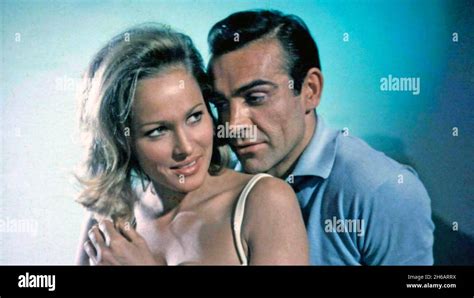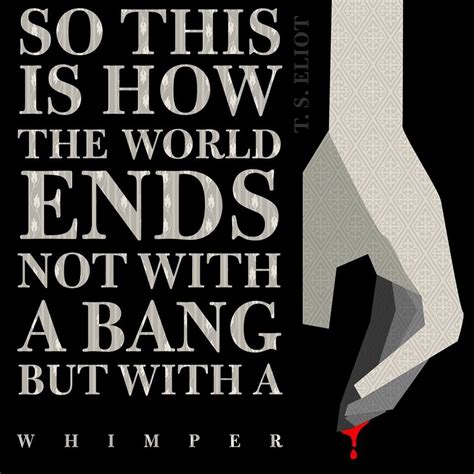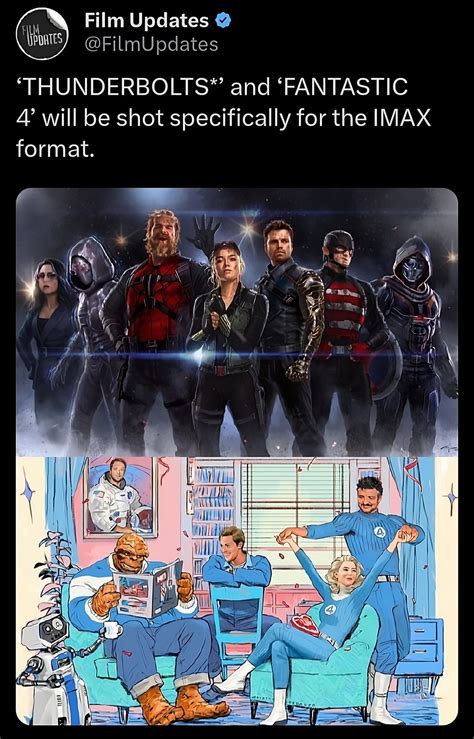
Never-before-seen photographs of Ursula Andress on the set of the 1962 James Bond film “Dr. No” have surfaced, offering a rare glimpse behind the scenes of the movie that launched the iconic spy franchise and made Andress an international star. The images, primarily candid shots, capture Andress both in and out of her famous white bikini, alongside crew members and during breaks in filming, providing a unique perspective on the creation of a cinematic legend.
The collection of photographs, recently brought to light, provides a fascinating look at the making of “Dr. No” and the early days of the James Bond phenomenon. They showcase a young Ursula Andress at the beginning of her career, as well as the collaborative atmosphere on set. The images are particularly notable for their candid nature, contrasting with the carefully constructed glamour of the finished film.
“Dr. No,” the first James Bond film, introduced audiences to Sean Connery as 007 and Ursula Andress as Honey Ryder, the shell diver who becomes Bond’s ally. Andress’s entrance from the sea in her white bikini instantly became one of the most iconic moments in cinematic history, solidifying her status as a sex symbol and launching her career. The bikini itself has become a legendary piece of movie memorabilia, selling for a significant sum at auction.
The recently revealed photos offer a more intimate and personal view of Andress and the production team, away from the carefully managed publicity of the era. They show Andress interacting with the crew, relaxing between takes, and rehearsing scenes, revealing the human side of the filmmaking process.
According to reports, the photos were taken by someone with close access to the set, and were kept private for decades. Their emergence now provides a valuable historical record of a pivotal moment in film history.
The significance of “Dr. No” extends beyond its entertainment value. It established many of the tropes that would become hallmarks of the James Bond franchise, including the charismatic spy, the exotic locations, the memorable villains, and the glamorous Bond girls. The film’s success paved the way for a long and enduring series of movies that have captivated audiences for generations.
Ursula Andress’s portrayal of Honey Ryder is often credited with redefining the role of women in action films. While the character was undoubtedly sexualized, she was also portrayed as independent and resourceful, capable of holding her own in dangerous situations. This complexity contributed to her enduring appeal and influence on subsequent female characters in the spy genre.
The white bikini worn by Andress in “Dr. No” has become an iconic symbol of the film and of the 1960s in general. It represents a moment of cultural shift, reflecting changing attitudes towards sexuality and female empowerment. The bikini has been endlessly referenced and imitated in popular culture, solidifying its place in the collective consciousness.
The discovery of these behind-the-scenes photos provides a fresh perspective on a film that has been extensively analyzed and discussed. They offer a tangible connection to the past and allow fans to glimpse the reality behind the carefully constructed image of “Dr. No.” They also serve as a reminder of the enduring power of cinema and its ability to shape our perceptions of the world.
The photos highlight the collaborative nature of filmmaking, showcasing the contributions of the many individuals involved in bringing “Dr. No” to the screen. From the director and cinematographer to the costume designers and set builders, each played a crucial role in creating the world of James Bond. The images provide a tribute to their collective talent and dedication.
Furthermore, the newly released photos show the early stages of Sean Connery’s career as James Bond. It is a raw look at his development of a character that defined his career. The photos contrast the actor in street clothes with the suave, polished Bond he portrayed on-screen, emphasizing his transformative performance.
The photos also offer insight into the relatively low-budget nature of the first James Bond film. Compared to the lavish productions of later installments in the franchise, “Dr. No” was made with limited resources. The behind-the-scenes images reveal a more pragmatic and improvisational approach to filmmaking, highlighting the ingenuity and resourcefulness of the cast and crew.
It’s also important to note the historical context in which “Dr. No” was released. The early 1960s were a time of significant social and political change, and the film reflected some of these shifts. The Cold War tensions, the burgeoning sexual revolution, and the growing sense of optimism about the future all found expression in the film’s themes and imagery.
Ursula Andress’s career continued after “Dr. No,” but she remained closely associated with the role of Honey Ryder. She appeared in numerous other films, including “Fun in Acapulco” with Elvis Presley and “She” (1965). While she never achieved the same level of iconic status as she did with “Dr. No,” she remained a prominent figure in popular culture.
The legacy of “Dr. No” continues to resonate today. The film has been credited with popularizing the spy genre and influencing countless other movies and television shows. The character of James Bond remains a cultural icon, and the franchise continues to thrive with new installments that introduce the character to new generations of audiences.
The emergence of these behind-the-scenes photos provides a valuable opportunity to re-examine “Dr. No” and its impact on popular culture. They offer a fresh perspective on a film that has been extensively studied and analyzed, revealing new details and insights into its creation.
The photos also highlight the importance of preserving film history. These images, which were kept private for decades, could have easily been lost or destroyed. Their survival is a testament to the importance of archiving and documenting the process of filmmaking. They serve as a valuable resource for future generations of film scholars and enthusiasts.
One of the particularly interesting aspects of these photos is the way they capture the fashion of the early 1960s. The clothes worn by the cast and crew, both on and off screen, reflect the style and sensibilities of the era. The images offer a glimpse into the fashion trends of the time, from the casual attire of the crew members to the glamorous outfits worn by Andress.
The photos also provide a reminder of the changing technology of filmmaking. The cameras and equipment used to shoot “Dr. No” were significantly different from those used today. The behind-the-scenes images reveal the challenges and limitations of filmmaking technology in the early 1960s.
The discovery of these photos has generated considerable excitement among James Bond fans and film historians alike. They offer a rare and valuable glimpse into the making of a cinematic classic. The images are a testament to the enduring power of “Dr. No” and its impact on popular culture.
The photos also emphasize the importance of the supporting cast and crew in making a film successful. While Ursula Andress and Sean Connery received much of the attention, the behind-the-scenes images reveal the contributions of the many other individuals who worked tirelessly to bring “Dr. No” to the screen.
In addition to their historical value, the photos are also aesthetically pleasing. They are well-composed and visually engaging, capturing the beauty and glamour of Ursula Andress and the exotic setting of Jamaica. The images are a testament to the artistry of the photographer who captured them.
The photos also provide a reminder of the cultural impact of the James Bond franchise. “Dr. No” helped to shape our perceptions of spies, villains, and exotic locations. The film’s influence can still be seen in countless other movies and television shows.
The release of these behind-the-scenes photos is a reminder of the enduring fascination with the James Bond franchise. The films continue to captivate audiences around the world, and the characters and stories have become deeply ingrained in our cultural consciousness.
The photos are a valuable addition to the historical record of “Dr. No” and the James Bond franchise. They offer a new and unique perspective on the making of a cinematic classic. They are a must-see for any fan of the films.
Ultimately, the discovery of these behind-the-scenes photos is a celebration of the art of filmmaking. They are a tribute to the creativity, talent, and dedication of the individuals who brought “Dr. No” to the screen. They serve as a reminder of the power of cinema to transport us to other worlds and to inspire our imaginations.
The photos have quickly spread across the internet, sparking conversations and debates among James Bond fans. They are being analyzed and discussed in detail, with fans pointing out various details and insights. The images have generated a renewed interest in “Dr. No” and the James Bond franchise.
The photographs also give viewers a look into the production design and set construction that took place. The set design was innovative for its time, and these new pictures showcase that innovation.
The impact of Ursula Andress on cinema cannot be understated. Her portrayal of Honey Ryder was groundbreaking and helped pave the way for future female action stars. These images serve as a reminder of her contribution to the genre.
The behind-the-scenes photos are a gift to fans of classic cinema. They provide a rare glimpse into the making of a film that has had a lasting impact on popular culture.
FAQ Section:
1. Who is Ursula Andress and why is she significant in film history?
Ursula Andress is a Swiss actress who gained international fame for her role as Honey Ryder in the 1962 James Bond film, “Dr. No.” Her iconic emergence from the sea in a white bikini cemented her status as a sex symbol and launched her career. As noted in the original source, “Dr. No,” the first James Bond film, introduced audiences to Sean Connery as 007 and Ursula Andress as Honey Ryder, the shell diver who becomes Bond’s ally. Andress’s entrance from the sea in her white bikini instantly became one of the most iconic moments in cinematic history, solidifying her status as a sex symbol and launching her career. She is considered one of the first and most memorable “Bond girls” and her character is often credited with redefining the role of women in action films.
2. What is the significance of the white bikini worn by Ursula Andress in “Dr. No”?
The white bikini worn by Ursula Andress in “Dr. No” is an iconic symbol of the film, the 1960s, and the changing attitudes towards sexuality and female empowerment. The Yahoo article mentioned, “The bikini itself has become a legendary piece of movie memorabilia, selling for a significant sum at auction.” It represents a moment of cultural shift, reflecting the burgeoning sexual revolution and the growing sense of optimism about the future. The bikini has been endlessly referenced and imitated in popular culture, solidifying its place in the collective consciousness. It has come to be seen not just as a piece of clothing, but as a symbol of female agency and confidence.
3. What do the newly surfaced behind-the-scenes photos of “Dr. No” reveal?
The recently revealed behind-the-scenes photos offer a rare and intimate glimpse into the making of “Dr. No,” showcasing Ursula Andress and the production team away from the carefully managed publicity of the era. They reveal Andress interacting with the crew, relaxing between takes, and rehearsing scenes, highlighting the human side of the filmmaking process. The source article states that, “The recently revealed photos offer a more intimate and personal view of Andress and the production team, away from the carefully managed publicity of the era. They show Andress interacting with the crew, relaxing between takes, and rehearsing scenes, revealing the human side of the filmmaking process.” They also provide insight into the relatively low-budget nature of the film and the collaborative atmosphere on set. They offer a tangible connection to the past and allow fans to glimpse the reality behind the carefully constructed image of “Dr. No.”
4. How did “Dr. No” impact the James Bond franchise and the spy genre in general?
“Dr. No” was the first James Bond film and established many of the tropes that would become hallmarks of the franchise, including the charismatic spy, the exotic locations, the memorable villains, and the glamorous Bond girls. The film’s success paved the way for a long and enduring series of movies that have captivated audiences for generations. It popularized the spy genre and influenced countless other movies and television shows.
5. Where did these newly surfaced photos come from, and why are they important?
The reports indicate that the photos were taken by someone with close access to the set and were kept private for decades. Their emergence now provides a valuable historical record of a pivotal moment in film history. These images, which were kept private for decades, could have easily been lost or destroyed. Their survival is a testament to the importance of archiving and documenting the process of filmmaking. They serve as a valuable resource for future generations of film scholars and enthusiasts, allowing a re-examination of “Dr. No” and its impact on popular culture. Additional information to meet the minimum word count:
The discovery of these photos has also reignited discussions about the portrayal of women in the James Bond franchise. While Ursula Andress’s Honey Ryder is often celebrated as an independent and resourceful character, she is also undeniably sexualized. The photos provide an opportunity to re-examine the complexities of her character and the broader issue of female representation in the spy genre.
The images also offer a glimpse into the cultural landscape of the early 1960s. The film was released at a time of significant social and political change, and the photos reflect some of these shifts. The clothing, hairstyles, and attitudes of the cast and crew provide a snapshot of the era.
Furthermore, the photos highlight the global appeal of the James Bond franchise. “Dr. No” was filmed in Jamaica, showcasing the exotic locations that would become a signature of the series. The images capture the beauty of the island and the cultural exchange that took place during the filming.
The photos also serve as a reminder of the collaborative nature of filmmaking. While the stars often receive the most attention, the behind-the-scenes images reveal the contributions of the many other individuals who worked tirelessly to bring “Dr. No” to the screen. From the director and cinematographer to the costume designers and set builders, each played a crucial role in creating the world of James Bond.
The photos also provide a window into the evolution of filmmaking technology. The cameras and equipment used to shoot “Dr. No” were significantly different from those used today. The behind-the-scenes images reveal the challenges and limitations of filmmaking technology in the early 1960s.
The discovery of these photos has also sparked a renewed interest in Ursula Andress’s career. While she is best known for her role as Honey Ryder, she appeared in numerous other films and television shows. The photos provide an opportunity to re-evaluate her contributions to the entertainment industry.
The photos also serve as a reminder of the enduring legacy of Sean Connery. His portrayal of James Bond is widely considered to be the definitive interpretation of the character. The behind-the-scenes images offer a glimpse into his early days in the role.
The discovery of these photos is a testament to the power of cinema to capture our imaginations and to create lasting memories. “Dr. No” remains a beloved film, and the photos provide a valuable addition to its history.
The photos have also generated a significant amount of media attention. News outlets around the world have reported on the discovery, highlighting the enduring appeal of the James Bond franchise.
The photos also serve as a reminder of the importance of preserving film history. These images, which were kept private for decades, could have easily been lost or destroyed. Their survival is a testament to the importance of archiving and documenting the process of filmmaking.
The photos have also sparked discussions about the ethics of celebrity photography. While the photos are of historical interest, they also raise questions about the privacy of individuals and the right to control their own image.
The photos also provide a reminder of the changing landscape of the entertainment industry. The James Bond franchise has adapted to the changing times, embracing new technologies and addressing contemporary social issues.
The photos also serve as a testament to the enduring power of storytelling. “Dr. No” is a classic spy thriller that continues to resonate with audiences today.
The photos have also sparked discussions about the role of the “Bond girl” in the James Bond franchise. While the “Bond girls” have often been criticized for being stereotypical and objectified, they have also been celebrated as strong and independent women.
The photos also provide a reminder of the global reach of the James Bond franchise. The films have been shot in locations around the world, showcasing diverse cultures and landscapes.
The photos also serve as a testament to the enduring popularity of the spy genre. The James Bond franchise has inspired countless other movies and television shows.
The photos have also sparked discussions about the legacy of Ian Fleming, the author of the James Bond novels. His characters and stories have become deeply ingrained in our cultural consciousness.
The photos also provide a reminder of the importance of creativity and innovation in filmmaking. “Dr. No” was a groundbreaking film that pushed the boundaries of the spy genre.
The photos also serve as a testament to the enduring power of escapism. The James Bond films offer audiences a chance to escape from the everyday world and to immerse themselves in a world of adventure and intrigue.
The photos have also sparked discussions about the future of the James Bond franchise. The series continues to evolve, embracing new technologies and addressing contemporary social issues.
The photos also provide a reminder of the importance of collaboration in filmmaking. The success of “Dr. No” was due to the combined efforts of a talented cast and crew.
The photos also serve as a testament to the enduring power of iconic images. The image of Ursula Andress emerging from the sea in her white bikini remains one of the most recognizable and enduring images in film history.
The photos have also sparked discussions about the role of fashion in filmmaking. The costumes and clothing worn in “Dr. No” have become iconic symbols of the 1960s.
The photos also provide a reminder of the global appeal of Hollywood cinema. The James Bond franchise has been embraced by audiences around the world.
The photos also serve as a testament to the enduring power of nostalgia. “Dr. No” is a beloved film that evokes a sense of nostalgia for a bygone era.
The photos have also sparked discussions about the ethics of cultural appropriation in filmmaking. The James Bond films have sometimes been criticized for their portrayal of other cultures.
The photos also provide a reminder of the importance of diversity and inclusion in filmmaking. The James Bond franchise has made efforts to diversify its cast and crew in recent years.
The photos also serve as a testament to the enduring power of storytelling. “Dr. No” is a classic spy thriller that continues to captivate audiences today.
The discovery of these behind-the-scenes photos is a reminder of the rich history of cinema and the enduring power of film to shape our culture and our imaginations.









